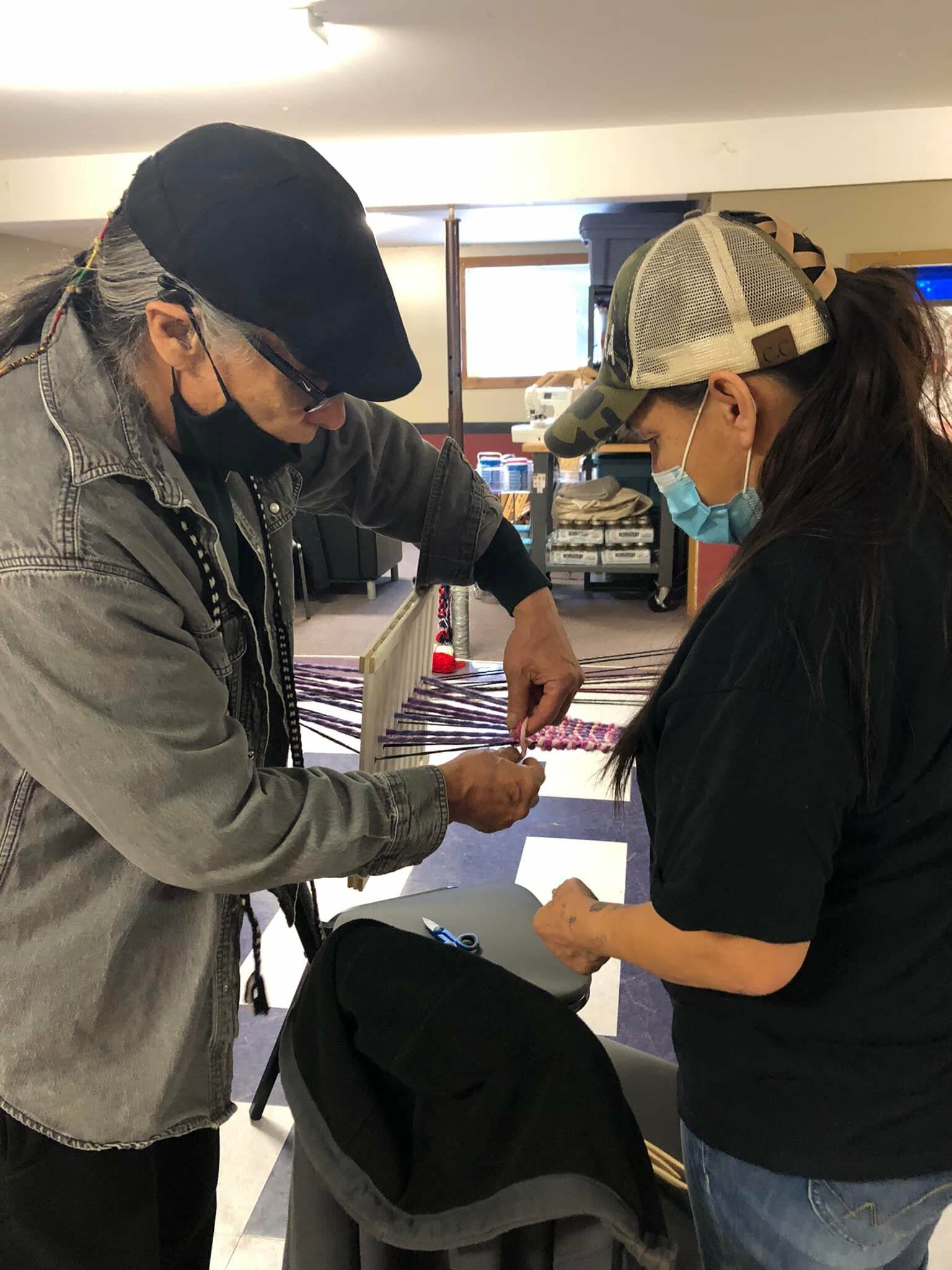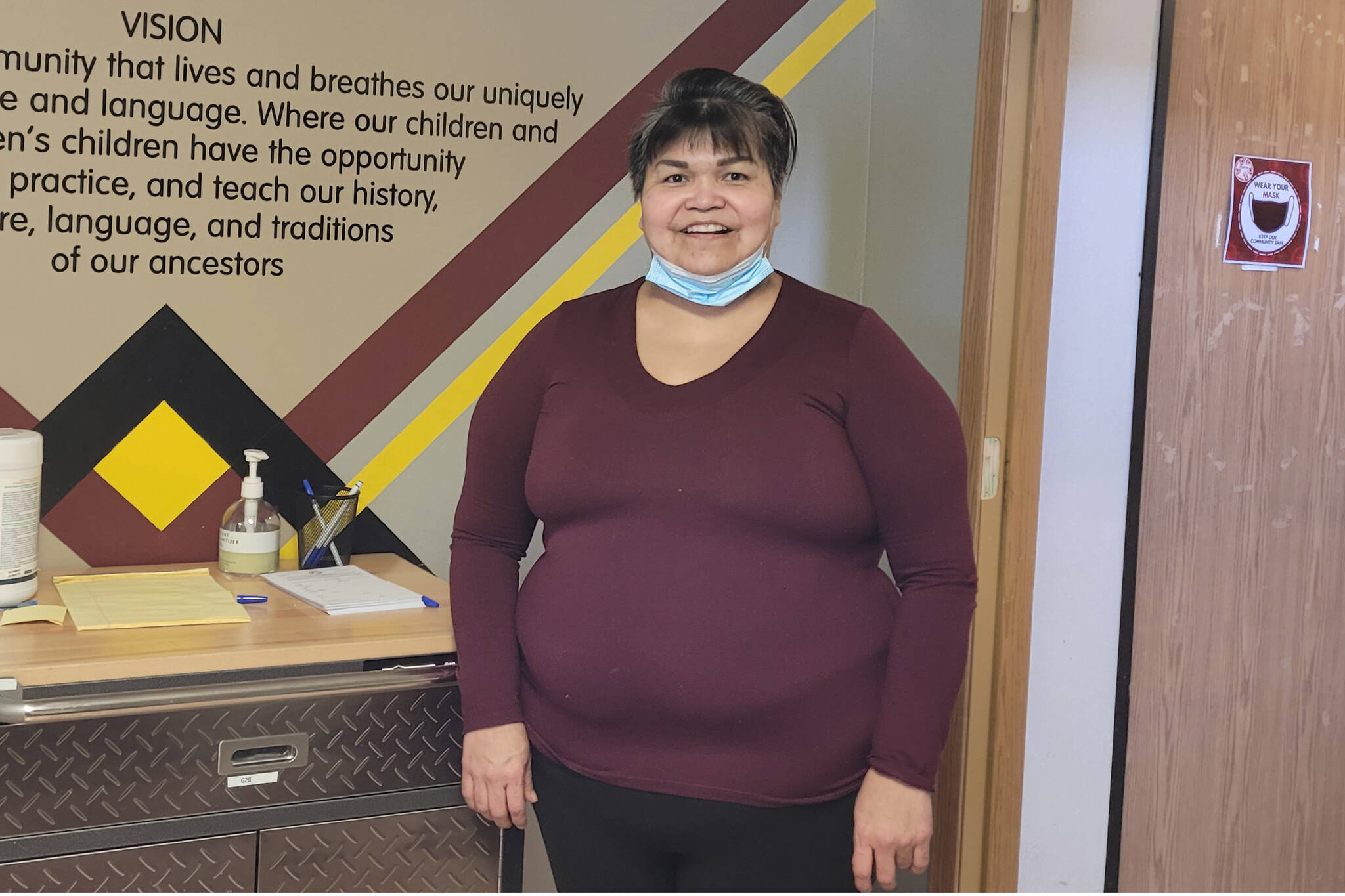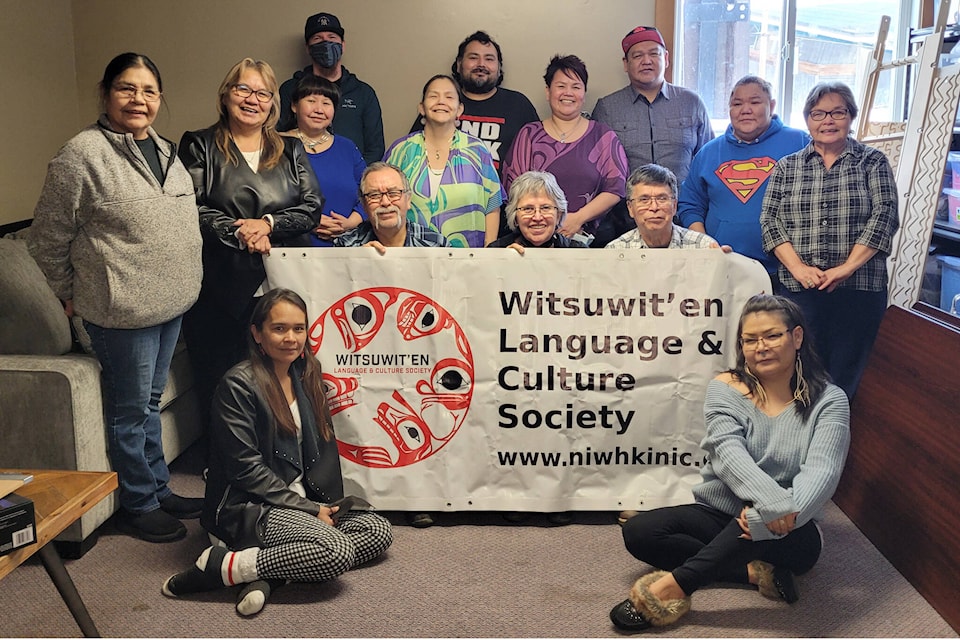Language is not merely a communication tool.
It is culture, knowledge, art, science, technology, sport, medicine and tradition.
In short, it is the identity of a people as a whole, and of persons individually.
“It totally encapsulates our way of life,” said Karen Plasway, executive director of the Witsuwit’en Language and Culture Society (WLCS). “That’s why we still stand here today, because we’ve been taught from generation to generation in the oral manner, with hands-on teaching, to carry on all the past into today. And that’s really come to light, right now, in this time of the pandemic.”
In the case of many First Nations, including the Witsuwit’en (formerly Wet’suwet’en), that very identity is under threat.
Plasway estimates only 2.8 per cent of the Nation’s roughly 4,000 people now speak the language based on a recent WLCS survey.
That is just over 100 speakers.
The numbers have been in decline for a long time.
In the 1970s a number of concerned women, set out to preserve and promote the language with a group called the Witsuwit’en Language Authority (WLA).
Plasway said it is unclear what the percentage of speakers was back then.
“Those numbers are not even accurate, because the stigma that was left (by the residential school system) really suppressed everybody’s openness to share,” she explained.
It has continued to decline, however, she asserted.
“And each time we lose an Elder… we lose culture, tradition, and a fluent speaker.”
In 2016, the WLA was formalized as the non-profit, non-governmental organization Witsuwit’en Language and Culture Society.
After the society was shut down during 2020, Plasway came on as executive director in the spring of 2021 to breathe new life into the effort to get the numbers up.
Since taking the helm, Plasway has been busy trying to obtain funding to put programs, activities and resources in place to engage people, particularly youth,
“That’s one of the biggest barriers… is the cost of everything today,” she said. “And that’s just kind of modern conveniences, but also travel and everything in that respect.”
The fundraising effort has been helped by the May 2021 discovery of the remains of 215 children buried on the site of a former residential school in Kamloops.
“I’m finding a lot more funding becoming available after the revelation of the 215,” Plasway said. “It’s all part of repatriation. So, we’re making a stand.”
Currently, that includes an online, drop-in Zoom class Monday afternoons from 1 - 3 p.m. and Wednesday evenings from 5 - 7 p.m.
“Anybody’s welcome to come join that, and you’re learning the basics and listening to everybody (speak) as well,” she said, adding they have had people from as far away as Seattle, Washington join.
In-class instruction has also resumed at the WLCS offices in Witset.
But it’s not just language instruction, the society is offering.
“We carry out a lot of cultural activities as well,” Plasway explained. “That’s drawing everybody out to realize who they are. The arts is a pedagogy (method of teaching), where it brings balance to mind, body and spirit. And with the arts and culture… it is considered an art today, but it was all our culture back in the day.”
For example, at the end of January, the WLCS held a tumpline workshop led by Eddie Michell, during which Elders had the opportunity to make the traditional strap that goes around a person’s head to offset the weight of heavy loads.
“It was so calming for those that participated,” Plasway said.
All of this renewed activity by the society is growing engagement, she said.
COVID-19 itself has also generated more interest in traditional ways, she added, referencing the panic buying and food shortages that accompanied the first wave of the pandemic underscoring food security issues.
“I had no panic,” she said. “I had all my preserves, all my jarring, my dried fish. We also had harvested wild game as well. And that’s all part of life that has been. And for myself, I’ve learned right from when I was seven years old.”
The hope is that cultural activities then draw people into speaking the language and learning the language.
“It’s all about self-identity,” Plasway said. “Self identity is really crucial in this time. There’s so many different pathways out there right now that have put people astray and wayward in addictions. And because they hold some type of trauma that has happened to their grandparents, but it’s intergenerational trauma that still stays with them. And the one thing that’s really going to get to them and get to their heart, and to change them around, change their path from where they’re at, is self-identity.
“From language and culture, you get self-identity, you get self-worth, you get self-confidence. And then you get independence. And then you become a meaningful contributor to Witsuwit’en Society.”


